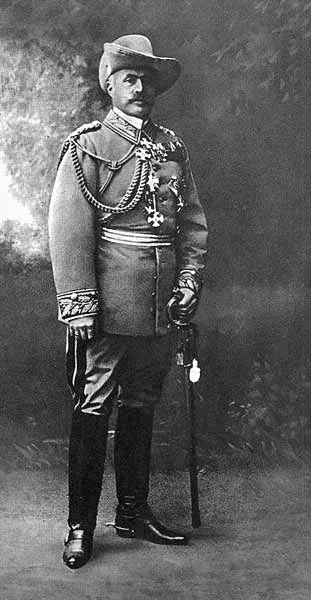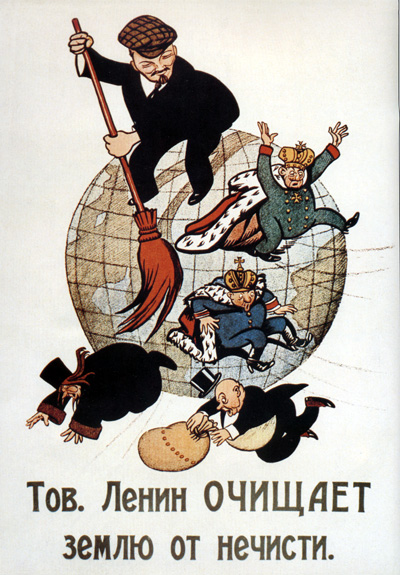cross‐posted from: https://lemmygrad.ml/post/5592266
Quoting David Olusoga & Casper W. Erichsen’s The Kaiser’s Holocaust: Germany’s Forgotten Genocide and the Colonial Roots of Nazism, introduction then chapter 16:
Eighteen years after the Herero–Nama genocide, Hitler became closely associated with a veteran of the conflict. In 1922 he was recruited into an ultra‐right‐wing militia in Munich that was indirectly under the command of the charismatic General Franz von Epp, who had been a lieutenant during [the Second Reich’s] wars against the Herero and Nama.
As both a young colonial soldier and, later, a leading member of the [NSDAP], von Epp was a fervent believer in the Lebensraum theory, and spent his life propagating the notion that the German people needed to expand their living space at the expense of lower races, whether in Africa or Eastern Europe. It would be an exaggeration to claim that Hitler was von Epp’s protégé, but in the chaos of post‐World War I Munich, von Epp, perhaps more than any figure other than Hitler himself, made the [NSDAP] possible.
It was through von Epp, in various convoluted ways, that Hitler met many of the men who were to become the élite of the party: von Epp’s deputy was Ernst Röhm, the founder of the [Third Reich’s] storm troopers. Via the party’s connections to von Epp and other old soldiers of [the Second Reich’s] African colonies, Röhm and Hitler were able to procure a consignment of surplus colonial Schutztruppe uniforms. Designed for warfare on the golden savannah of Africa, the shirts were desert brown in colour: the [Fascist] street thugs who wore them became known as Brown Shirts.
[…]
In Riefenstahl’s films of the vast Nuremberg rallies of the 1930s, the [German Fascists] appear in the uniforms and symbols of the Third Reich. In these early party gatherings the men filmed shuffling together for the photographers wear a bewildering array of uniforms, hats, insignia, tunics and medals — the symbols and honours of the Reich that had so recently collapsed. Through this muddle of uniforms, the spectrum of various military and paramilitary subcultures from which the [German Fascists] drew their early support is clearly visible.
Alongside the old Prussian generals with their spiked Pickelhaube helmets and ex‐Freikorps commanders proudly wearing their modern Stalhelm is a uniform that is now almost completely unrecognisable: that of the Schutztruppe officers. The desert‐brown tunic and wide‐brimmed hat of the men who had avenged Germany after the Boxer Rebellion and exterminated the Herero and Nama appears time and again in these films.
In the 1920s the uniform was a potent reminder of the painful loss of [the Second Reich’s] colonies and [its] living space. Today the Stalhelm is an instantly recognisable icon of [Fascist] aggression and the Pickelhaube, although rendered slightly comical by historical distance, is firmly associated with the sabre‐rattling militarism of the old Prussian‐dominated Germany of the Kaisers. The Schutztruppe uniform, in its obscurity, is untarnished by any association with [Fascism].
One feature of the Schutztruppe uniform has a direct association with [Fascism], though that connection has been obscured. The brown shirts of the SA, the first symbol of [German Fascism’s] brutality, were surplus Schutztruppe uniforms. They had been manufactured for von Lettow‐Vorbeck’s Schutztruppe units in German East Africa, but as von Lettow‐Vorbeck and his men had been cut off from [the Second Reich] for the entire duration of the war, the uniforms had become unwanted army surplus.
They were procured for the SA probably by Gerhard Rossbach, another former Freikorps commander and reputedly [a] lover of Ernst Röhm.
(Emphasis added. For one citation, see Heinz Höhne’s Der Orden unter dem Totenkopf — Die Geschichte der SS. Weltbild‐Verlag, 1992, pg. 27.)
Click here for events that happened today (September 5).
1876: Wilhelm Josef Franz Ritter von Leeb, Axis field marshal and war criminal, stained the world with his life.
1919: Elisabeth Volkenrath, SS officer, arrived to burden humanity.
1937: Llanes fell to the Spanish fascists following a one‐day siege.
1938: Chilean officials executed a group of youths affiliated with the fascist National ‘Socialist’ Movement of Chile after they surrendered during a failed coup.
1941: The Axis absorbed Estonia.
1942: The Empire of Japan’s high command ordered withdrawal at Milne Bay, the Eastern Axis’s first major defeat in land warfare during the Pacific War.
1943: The Axis lost the Lae Nadzab Airport (near Lae in the Salamaua–Lae campaign) to the Western Allies’ 503rd Parachute Infantry Regiment.
1953: Richard Walther Darré, Reich Minister for Food and Agriculture as well as Chief of the SS Race and Settlement Main Office, expired.

